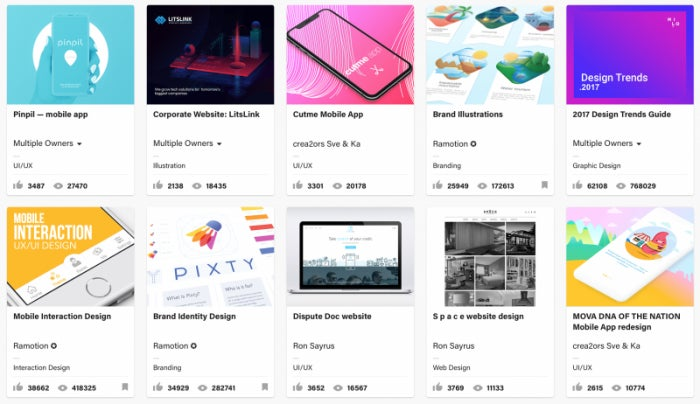Developing original work is something many designers strive for. It’s a natural tendency among creative people to think outside the box, and the motivation is to differentiate themselves as creative artists. We all like the notion that our ideas are new creations. But should we always strive to create original designs? The short answer is no.
In this article, I’ll provide a few thoughts on why original design is not always the best solution for both you and your users.
Art Is Not Design
A lot of ideas about originality in design come from the idea that design is art, but actually design is more of a science than an art. It’s important to understand why we’re designing in the first place: to solve problems. While art is almost always a personal expression and doesn’t have to solve real-world problems, design is purposeful. We design for other people so they can use our products. While in the arts it’s possible to constantly innovate and try out new things without fear of harming anyone, we simply can’t afford that in design. Design should always be evaluated by its effectiveness, or in other words, whether people can use it.
We Are All Influenced by Others
A wise man once said, “There’s nothing new under the sun.” We’re working in a huge creative market where most design isn’t original. It might sound shocking to you, but the vast majority of designs you create aren’t original, even if you think they are. Why? Because you don’t create in a vacuum; you’re influenced and inspired by the designs you see around you all the time. As a result, when we are designing something we are creating designs that are similar to the ones we like (even if we’re trying to be original).
As a designer, it’s inevitable you’ll get inspiration from another design. Image credits: Behance
Design Conventions Are A Designer’s Best Friend
Almost every designer wants to be an innovator. They want to be recognized as the one who rewrote the rules on how we design certain elements. In this endeavor, many designers would rather try to reinvent the wheel than adapt to conventional design patterns. Unfortunately, in most cases, trying to reinvent the wheel fails.
For most design problems, proper solutions already exist. If you come across a design problem that has already been solved by others designers it’s important to consider the solution they found. Not taking this solution into account and continuing to design just to be original is a huge mistake. When you’re designing for the sake of originality, you’ll probably be distracted from the main reason you started designing in the first place–creating effective solutions for people. In most cases, breaking design conventions results in a frustrating user experience.
Left: Conventional icon and color will be familiar to most users. Right: Non-conventional error icon will confuse many users.
Adherence to standard design principles, conventions, and patterns benefit users. It makes design:
- **More usable.**Effectiveness of function is more important than creating original forms. Design should be functional first. Design conventions work well because they’ve already been tested for usability by real users.
- Easy to learn. Users appreciate familiarity over novelties, and since users are familiar with conventions, they won’t need to spend a lot of time learning how to use a product.
- Long-term basis. Only the strongest functional designs have the opportunity to become conventions.
A designer’s job is to understand the user’s goals and needs, and find the most relevant patterns that help create the strongest products to satisfy those needs.
Non-Original Design Isn’t The Same as A Blind Copy
When talking about non-original designs, don’t think that your design should be an exact copy of something that came before it. A design that’s a blind copy of an existing design is a false finish because it often skips understanding. To create a good design based on existing design, you should understand why that design looks and works the way it does. If you blind copy something, there’s a huge possibility that you’ll miss that. Why? Because you only reproduce the visible layer (the surface) instead of understanding all the layers underneath.
Understanding a designer’s intention is critical for good design, and to understand the intention it’s important to dig deeper than the surface. When you understand the original intention, there’s a possibility you’ll come up with a good design solution. In this case, we’re talking not about a copy, we’re talking about inspiration, and your end result will be different from the one that was a source of inspiration.
Both the Pontiac Firebird 3rd Gen. and Nissan 300ZX were produced in the same timeframe (early ’80s). It’s clear that designers are often inspired by each other. Image credits: Wikipedia
Expanding Knowledge Is The Key
It shouldn’t be surprising to say that everything is built off something that preceded it. Creativity in design is the ability to take past experiences and new information and synthesize them to create something new. That’s why designers should always be passionate about expanding their knowledge of the world and stay up to date with current trends (designers need to understand what is generally acceptable and what has been done before). This cumulative knowledge and experience is what helps us craft more insightful designs.
A designer’s vision is the synthesis of passion and experience.
Conclusion
Mies van der Rohe once said, “Don’t try to be original. Just try to be good.” When it comes to functional design, originality is no measure of success. Useful, usable, valuable, credible–these are the characteristics of good design. Remember that the solution you seek is probably already out there and all you need to do is to find it.




